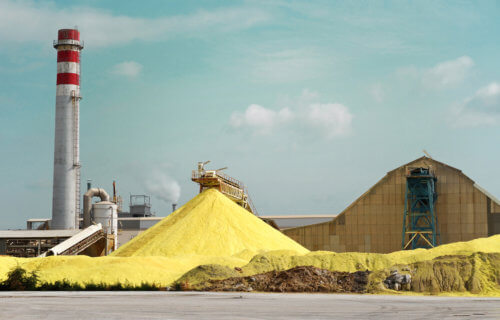LONDON – The world is running out of sulfuric acid, a valuable resource in modern industrial society. A recent study from the University College London suggests a sulfur shortage could stifle advancements in green technology and threaten global food security.
Sulfuric acid is essential for producing phosphorus fertilizers that help maintain the global food supply. Additionally, phosphorus fertilizers are used for extracting rare metals, such as cobalt and nickel. Those metals are used in lithium-ion batteries that power up numerous electronic devices from cell phones to laptops.
With increased farming and the world moving away from fossil fuels, geographers estimate global demand for sulfuric acid will rise to 246 to 400 million tons by 2040. However, depending on how quickly decarbonization happens, there may only be 100 to 320 million tons available for use.
About 80% of the sulfur supply worldwide is in the form of sulfur waste. Sulfur waste comes from the desulfurization of crude oil and natural gas that reduces sulfur dioxide gas emissions and causes acid rain. The study authors suggest that if action is not taken to reduce the need for sulfur, there will be a high demand for mining to compensate for the remaining amount, damaging the environment in the process.
“Sulfur shortages have occurred before, but what makes this different is that the source of the element is shifting away from being a waste product of the fossil fuel industry,” says study lead author Mark Maslin, a professor of geography at the University of College London, in a statement. “What we’re predicting is that as supplies of this cheap, plentiful, and easily accessible form of sulfur dry up, demand may be met by a massive increase in direct mining of elemental sulfur. This, by contrast, will be dirty, toxic, destructive, and expensive.”
“Our concern is that the dwindling supply could lead to a transition period when green tech outbids the fertilizer industry for the limited more expensive sulfur supply, creating an issue with food production particularly in developing countries,” adds Simon Day,a researcher at the UCL Institute for Risk & Disaster Reduction and study coauthor.
In the study, the researchers estimated three sulfuric acid demand scenarios from 2021 to 2040. To come to these estimates, they used data from historic and forecast demand with an annual growth rate ranging from 1.8% to 2.4%.
For reducing sulfur demand, the team proposes alternative options including recycling phosphorus in wastewater for fertilizer, increasing the recycling of lithium-ion batteries, and using lower energy capacity/weight ratio batteries.
The study is published in Geographical Journal.
